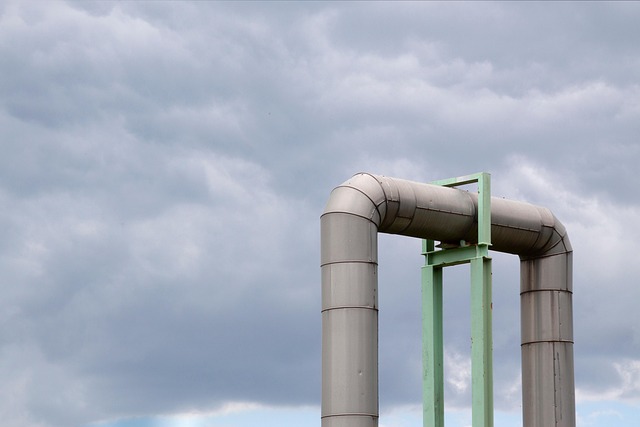Central heating installation costs vary based on space size, boiler type (e.g., condensing vs. conventional), efficiency ratings, and system type (radiator, underfloor heating, heat pump). Complexities like property size and unique heating needs impact pricing, with energy-efficient models offering long-term savings. Detailed quotes from certified professionals are essential for effective budgeting and understanding system benefits. Consider home size, fuel type, insulation, and landscaping for informed decisions, balancing green initiatives with comfort and cost efficiency.
Planning a central heating installation? Our comprehensive guide is your go-to resource. Discover a detailed central heating installation cost calculator, exploring factors that influence pricing and various heating system options. Learn how to maximize budget efficiency for your home. Whether you’re budgeting or simply curious, this article provides essential insights into the world of central heating installation costs.
- Understanding Central Heating Installation Costs
- Factors Influencing Installation Expenses
- Cost Breakdown for Different Heating Systems
- Maximizing Budget Efficiency for Your Home
Understanding Central Heating Installation Costs

Understanding Central Heating Installation Costs can be a complex task as it involves many variables. The cost of installing central heating systems in an apartment or any property varies widely depending on several factors, such as the size and layout of the space, type of boiler chosen, efficiency ratings, and additional features like smart thermostats. Before diving into installation, it’s crucial to understand these elements to get an accurate estimate.
Different boiler types and setup configurations have varying price points. For instance, condensing boilers are generally more expensive than conventional models but offer significant energy savings over time. Moreover, the complexity of the job also plays a role; installing a system in a compact apartment might be less labour-intensive than a larger home with unique heating requirements. Understanding these nuances is key to budgeting effectively for your central heating installation needs.
Factors Influencing Installation Expenses

The cost of central heating installation can vary widely based on several key factors. One of the primary influences is the type of system chosen, such as radiator, underfloor heating (including ducted systems), or heat pump. Each has its unique advantages, like the energy efficiency and comfort offered by underfloor heating, but comes with varying price points. The size of your property plays a significant role too; larger spaces will require more powerful systems, which can increase installation costs.
Another crucial consideration is the complexity of the install, particularly if you’re replacing an existing system or have unique flooring requirements. Additional factors like access to fuel sources and the need for specialist equipment or materials can also affect expenses. Getting a detailed quote from certified professionals is essential, as it allows you to plan your budget effectively and understand the potential advantages of different systems in terms of both cost and comfort, like the guaranteed efficiency of ducted underfloor heating systems.
Cost Breakdown for Different Heating Systems

When considering a central heating installation, understanding the cost breakdown for various systems is key to informed decision-making. The price of your new central heating system will depend on several factors, including the size and layout of your home, the type of fuel you intend to use, and the efficiency level required to meet your specific heating needs. For instance, a standard gas boiler installation typically costs between £1,500 and £3,500, while electric heat pump systems can range from £4,000 to £8,000 or more, depending on size and brand.
In terms of how landscaping can affect central heating needs, a well-designed outdoor space with strategic planting and insulation can actually contribute to energy efficiency indoors. Spacious home design with efficient central heating landscaping can help regulate temperatures by providing natural shade in summer and allowing for better airflow, reducing the workload on your heating system. Moreover, proper drainage of condensate from high-efficiency systems, like modern condensing boilers or heat pumps, is crucial for both environmental sustainability and maintaining optimal indoor comfort, ensuring a harmonious balance between green initiatives and comfortable living spaces.
Maximizing Budget Efficiency for Your Home

Maximizing Budget Efficiency for Your Home begins with understanding your central heating installation needs and costs. Before diving into the installation process, it’s crucial to assess your attic space and existing insulation – proper insulation is key to maximizing energy efficiency. This means less heat loss and lower running costs over time, making your new central heating system a more cost-effective investment.
When finding a suitable central heating system for your home, consider the size of your property, number of rooms, and family size. A newbuild home may require a different approach than an older property, so ensure you consult with professionals to determine what does a central heating system warranty cover? The right setup will not only keep your home warm but also contribute to energy savings in the long run, making it a smart financial decision.
When considering a central heating installation, understanding the cost breakdown and maximizing budget efficiency are key steps. By factoring in various expenses and choosing the right system for your home, you can ensure a cost-effective and comfortable living environment. Utilize this calculator to estimate costs and make an informed decision regarding your central heating installation.
